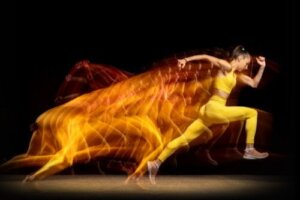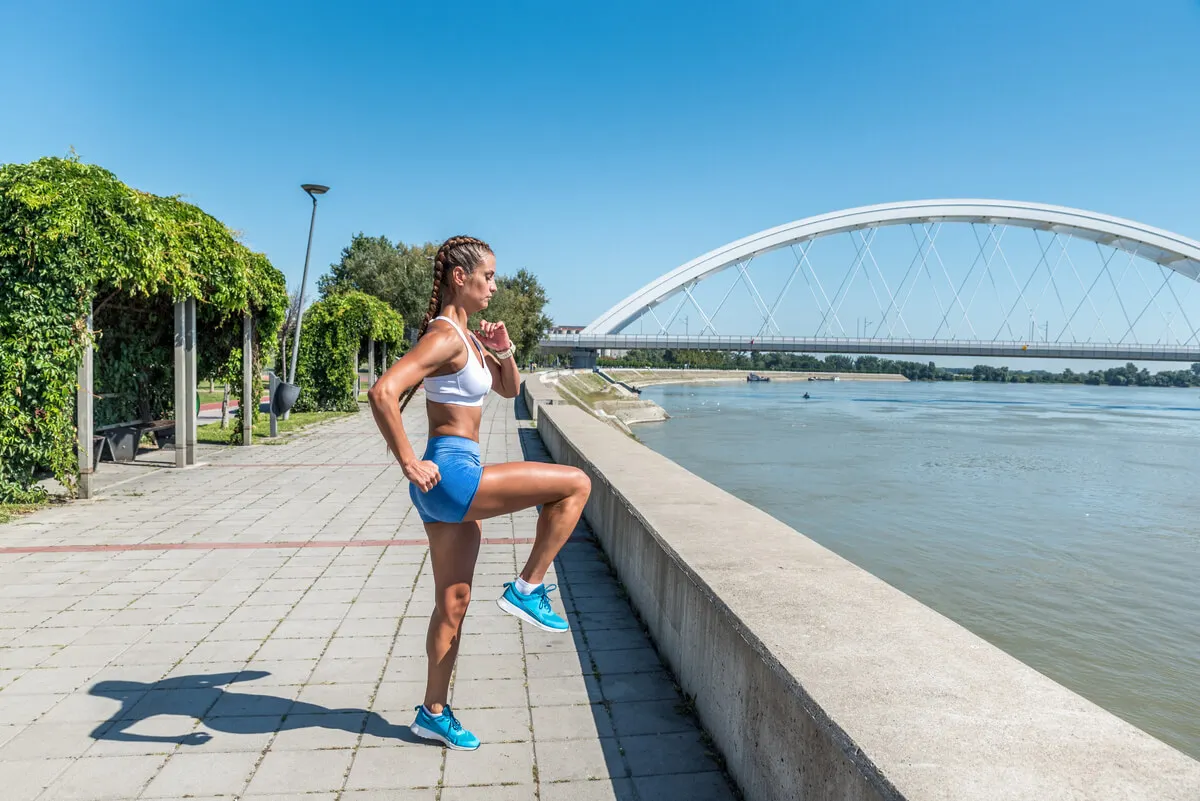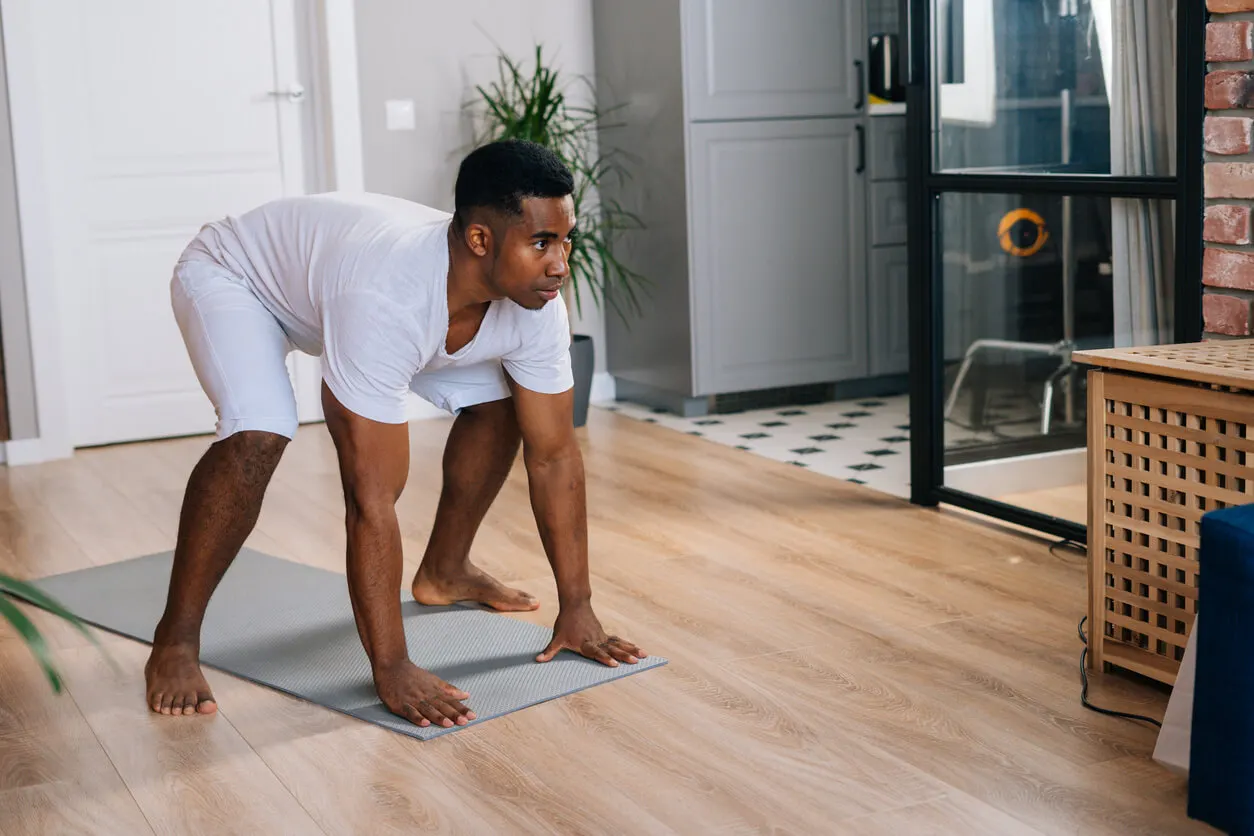11 Exercises to Improve Your Running Technique

Running is one of the most popular activities when it comes to physical activity. You don’t need too much equipment, you can enjoy the outdoors, and everyone can adjust their running to their time and possibilities. However, for athletes and amateurs alike, doing it the right way will provide benefits and greater safety. Read on to learn 11 exercises that will help you improve your running technique.
Running technique is all the movements we make when running, although the emphasis is on the ideal way to execute them. Improving our technique will allow us to achieve optimal performance, provide us with strength, joint mobility, and more efficiency.
Stride, arm placement, and torso position have a direct influence on the execution of the activity. If the technique is poor, in addition to declining performance, we will be more exposed to discomfort and injury.
Know the exercises that will help you improve your running technique
Performing basic exercises that are very easy to do will help improve our technique and provide us with multiple benefits. We do not need any special equipment to put them into practice and, in addition, we can do them at home, outdoors, or wherever we feel more comfortable.
In fact, a study entitled Running technique is an important component of running economy and performance recommended that runners and coaches pay attention to the specific aspects of stride parameters. They should also pay attention to the angles of their lower extremities. In part, this helps to optimize pelvic motion.
Here are 11 exercises that will help you improve your running technique and prevent common injuries. It’s time to put them into practice!
1. Skipping
This is one of the most common exercises and has some variations. It consists of bringing the knees up alternately as we move forward.
Coordination is important, since we must accompany each of the movements with a proper stop. It can also be done without running or without moving.
Skipping allows us to work on our speed, stability, coordination and helps us to strengthen the lower body. Overall, there are three modalities:
- High skips: We raise the knees to 90 degrees, approximately to the waistline.
- Medium skips: We raise our knees to 60 degrees. The heel of the elevated leg should reach the height of the opposite knee.
- Low skips: The knees are raised alternately at 45 degrees. This is the most similar to the movement we perform when running.

2. Skipping on one leg
Another skipping option is to work unilaterally, which requires greater coordination and stability. For example, if we work the left leg, we must raise this knee as we move forward, while the right leg will accompany this movement with normal steps.
When performing a different movement with each limb, the exercise becomes quite complex. Working on technique is key.
If we take a scientific study done in 2003 as an example, we will see that among the most common factors involved in running injuries are training methods, poor leg alignment, and muscle weakness and inflexibility. So, skipping can be a preventive method.
3. Russian skipping
We do this with the torso straight. Our bodies barely lean backward and we keep our legs straight. Then, we must take alternate steps forward and accompany with arm movements in a coordinated manner. The knees should not bend and the heels should never touch the floor. This helps to strengthen the ankle and hip extensor muscles.
Like this article? You may also like to read: Kylian Mbappé: The Rigorous Exercise and Diet Routine of Soccer’s Next Big Star
4. Lateral running
This activity is simple, but it helps us improve leg coordination, mobility, and power. It involves moving to one side by striding sideways. Then, we simply repeat the exercise to the other side.
5. Heels to gluteus
This is another of the classic exercises that are very popular in the warm-up before physical activity. It consists of bringing the heels alternately towards the buttocks as we move forward.
The back must always be upright and the gaze must be kept straight ahead. This exercise mainly works the glutes, hamstrings, and lower back.
6. Walking on tiptoe
Walking on tiptoe will help us to strengthen the muscles in the area. We should take short steps and try to keep our heels as high as possible.
The arms accompany the movement with each step and the torso always remains upright. The tibialis anterior muscle and calves are worked with this exercise.
7. Walking with the heels
To do this, we must rest the heels on the floor and lift the tips of the feet. In this way, we take steps with the legs stretched and our backs straight.
The movement should also be accompanied by braking. A common mistake is to bring the hips backwards; however, this is something that’s important to avoid. Instead, try to keep your hips aligned with the torso.
This activity helps us to strengthen joints, mainly the ankles. In addition, it improves coordination and balance.
8. Running backwards
This involves running backwards. We must accompany the movement with braking and achieve the necessary coordination.
When moving in the opposite direction to which we are accustomed, this exercise gives us balance, sharpens the senses, and strengthens muscles such as the calves, which have less tension when we go forward. It also works the gluteus maximus and strengthens the Achilles tendon.
9. Jumps with feet together
With the torso straight, we must move forward while slowly jumping. However, these jumps have to be more upward than forward. The impulse should start from the extension of the ankle.
With this practice, we work the entire extensor chain, the support of the foot, and strengthen the ankles and Achilles tendon.
10. Frog jumps for running technique
In squatting position, we must propel ourselves forward as far as we can, as if we were the animal in question. When we make the jump, our arms will also help us with a movement from back to front.
We must take into account the position of the torso, which must be upright, since it’s common to make the mistake of bending the back. This exercise helps to improve momentum, achieve greater power, strengthen the upper body, and work the middle zone.

11. Jumping jacks
Jumping jacks involve jumping on one leg and landing on it again. Once the set is completed, the work is repeated on the other leg, although they can also be performed alternately.
The priority here should be to perform controlled movements, especially when landing, and to keep the body upright. It should also be noted that if we raise a leg, the arm that accompanies this movement must be the opposite.
Certain rhythms are used to improve momentum and displacement while doing this exercise. There are two variations:
- Vertical jumping jacks: The objective is to jump upwards.
- Horizontal jumping jacks: In this case, the impulse must be forward.
We think you may be interested in reading this, too: Trent Alexander-Arnold: The Vision at the Heart of His Training Sessions
Don’t lose your running technique!
Exercises to improve our running technique are simple to perform and don’t demand too much of our time. It’s likely not your goal to become a professional athlete, but if you go running to clear your head and feel better, it’s best to take them into account how to do it safely.
You can also turn to a professional to guide you in terms of posture and help you achieve the necessary coordination for activities that have a higher degree of difficulty. Don’t forget that running well will provide more benefits and will help strengthen the muscles and joints, so it also means less risk of injury.
All cited sources were thoroughly reviewed by our team to ensure their quality, reliability, currency, and validity. The bibliography of this article was considered reliable and of academic or scientific accuracy.
- Folland JP, Allen SJ, Black MI, Handsaker JC, Forrester SE. Running Technique is an Important Component of Running Economy and Performance. Med Sci Sports Exerc. 2017 Jul;49(7):1412-1423. doi: 10.1249/MSS.0000000000001245. PMID: 28263283; PMCID: PMC5473370. Disponible en: https://pubmed.ncbi.nlm.nih.gov/28263283/
-
Johnston CA, Taunton JE, Lloyd-Smith DR, McKenzie DC. Preventing running injuries. Practical approach for family doctors. Can Fam Physician. 2003 Sep;49:1101-9. PMID: 14526862; PMCID: PMC2214294. Disponible en: https://pubmed.ncbi.nlm.nih.gov/14526862/
This text is provided for informational purposes only and does not replace consultation with a professional. If in doubt, consult your specialist.








